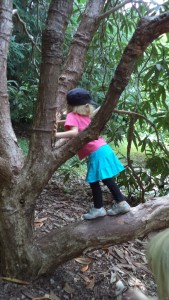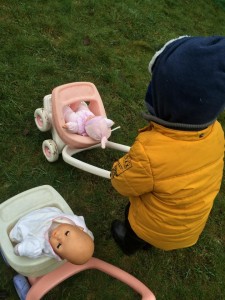International Women’s Day has some things for parents and caregivers to think about in terms of gender equality for young children and play. There are some questions we need to ask ourselves.
 One of these questions could be, “Are we limiting kids and play and dividing it into what boys do and what girls do? Sometimes we hear kids say, “Girls can’t do that,” or, “Boys can’t do that,” and we wonder where these ideas come from.
One of these questions could be, “Are we limiting kids and play and dividing it into what boys do and what girls do? Sometimes we hear kids say, “Girls can’t do that,” or, “Boys can’t do that,” and we wonder where these ideas come from.
As a young mom, I fully intended that my daughter would be allowed to play with trucks as well as dolls and my son could a have playhouse and dishes as well as blocks and other construction toys. There would be gender equality in our house. Despite having the same toys though, they didn’t play with them the same way. My daughter wrapped up the tractor in a blanket and put it to bed. My son used the spoon as a car and drove it down the hall complete with gear-changing noises.
Some of children’s ideas come from watching the world around them. In an article called “Boys Can’t Do That”, Martha Rakestraw writes, “Studies show that by age two children begin to notice physical differences and by age three they have developed ideas about behaviors, activities, etc., that go with a particular gender. ”
As kids are trying to figure out how things work, they tend to overgeneralize. When we hear kids say something like, “Boys can’t play with dolls,” we can ask, “Do you think some boys might like to play with dolls?” A child may comment, “Girls can’t climb trees.” Again, we can ask, “Do you think sometimes a girl might climb a tree?” This gives kids something to think about as they develop their understanding of gender.
International Women’s Day supports women and girls to have equal opportunities and experiences. Gender equality for young children is a concern for all of us. It may be changes like asking stores to change layouts so instead of being divided into Girl Toys and Boy Toys, the sections might be Construction Toys, Dolls, Art Toys, etc. It could be supporting access to education. For all children, what are some ways we can support their play and development?

